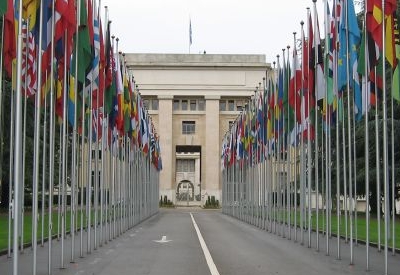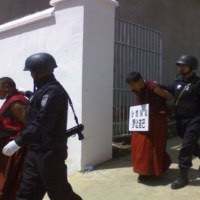Tibet & China: A Power- Sharing Approach
from June 17, 2014
A few years ago, U of Waterloo –Professor emeritus, Peter Woolstencroft
taught a course on the issue of power-sharing between two governing bodies.
Usually, one nation-state may hold more sway over a smaller region that may be
close to encroaching on it, or, as we have seen recently with Russia-Ukraine, they (Russia) have a tacit belief that this parcel of land (Crimea Ukraine) , belongs in their hands, for historical or strategic reasons.
In Chariots of Fire, I explain that, historically, Tibet & China have never
shared a consociational arrangement in their history. Tibet, had a similar Patron – Priest relationship with the Mongolian Empire & Godan Khan, offering military prowess to Tibet and Sakya Pandita. China claims Mongolian power had become vulnerable and China, not Mongolia, were the proper stewards of Tibet. Historically, we see Tibet in a vacuum after WWII and the transition in China from Chiang Kaishek who was Chairman of the National
Military Council, and then President of the mRepublic of China for one year during China’s transition to a communist economic model.
Tibet was considered mired in its feudal past and in need of modern infrastructure. China, with Mao in firm control saw Tibet as a pearl, a stratagem to influence its position in Asia and an independent India, which was partitioned in 1947 into Dominion of Pakistan and the Peoples Republic of Bangladesh.
The Dalai Lama – Tenzin Gyatso- was 15 years of age in 1950 when China made promises of modernisation without loss to Tibetan monastic and cultural values. Chinese authorities procured a ’17 Point Agreement’ in 1951 that laid out terms for these changes that seemed palatable at the time for the young Dalai Lama, who was without peer or regent to guide in governmental and spiritual matters. However, by 1959, The Dalai Lama had
seen Chinese hysteria denigrate the typical Tibetan way of life, and socialism manifest through the central government in Beijing. The Dalai Lama, upset with the state of affairs in Tibet, failed to generate an
effective uprising, and on March 10, 1959 he was spirited out of Tibet and into exile in Dharamsala, India.
China has maintained total control over Tibetan affairs since this point in time (1959.) There continues to be a
degradation of monasteries, spiritual artifacts, the incursion of nuclear waste and pollution, deforestation, and strict limits on what people can practice regarding Buddhism and how they conduct themselves in public, so, as not to criticize Chinese authorities, which is punishable. Indeed, it is punishable to possess and or display a picture of the Dalai Lama. The continued oppression has led to a period of revolt since 2008, where individuals – mostly monks or nuns – are “self – immolating” to create awareness of the suppression that is taking place inside Tibet.
The international community failed to answer Tibet’s call for help after China invaded Tibet in 1949. The United States has taken an interest in Tibetan affairs, and at one point was training CIA officials to counter Chinese authority, however, this has ended around the time of the Nixon/Kissinger administration.
As the number of Tibetans that self – immolate continues to rise, the international community needs to look at
the issue of human rights abuses in Tibet. The dilemma is that the international community is quite happy with
inexpensive Chinese goods that helps to bolster their economies, similar to Western nation-states reliance on middle eastern oil to drive our energy needs (the U.S. is now pumping equal levels of crude oil as Russia and Saudi Arabia in 2018.) Though, the price of that oil has spiralled into a stratosphere that makes it not as an
attractive commodity as it was before OPEC was instituted (Currently, crude oil has plummeted.)(Now, it has returned to the $70.00 threshold in 2018 due to OPEC cuts.)
The number of demonstrations and conflicts in China continues to escalate and put pressure on the PRC. Reuters reported on June 16, 2014 that China had executed 13 people for terrorist attacks in Xinjiang
province, providing an example of Chinese oppression in restive provinces. Hope abounds that democratization will find its way into China and spread west to Tibet.
A consociational approach to the Tibet issue provides Beijing an opportunity to work with the international community and the Tibetan government in exile on a power-sharing (consociational) arrangement that provides
benefits to both sides, while everyone saves face.
In 2018 we can see that China has continued with the status quo- in Tibet where one Chinese newspaper reported that Tibetan school children children are being banned from religious activities. https://www.scmp.com/news/china/policies-politics/article/2156606/tibetan-schoolchildren-banned-religious-activities. The international community is fairly muted on Tibet as they are learning how to deal with the unpredictability of Washington's political sphere. However, there is an opportunity here for nation states that have an interest in the nexus of human rights and abuses to be heard in political discussions that are focussed on tariffs and economic issues such as Brexit. Furthermore, oil prices are back up and Iran is back out.
Consociationalism defined:
"Consociation is a well-established and potentially democratic, liberal and fair means of achieving self-determination for communities in deeply pluralist or deeply divided places. It is especially appropriate where the residential mixing of populations make outright sovereign independence for each community in their own nation-state - or territorial autonomy for each community in their own regional state - difficult to accomplish, let alone justify."
http://pesd.princeton.edu/?q=node/14





